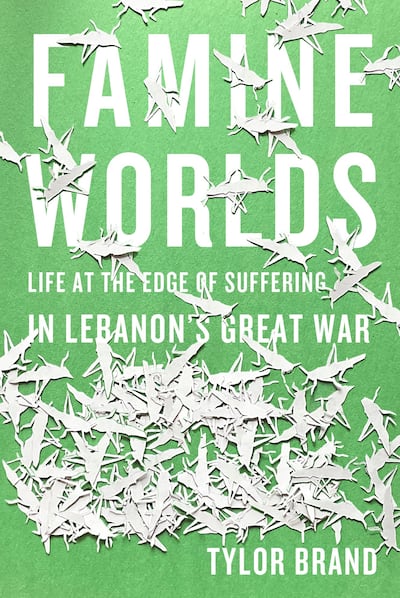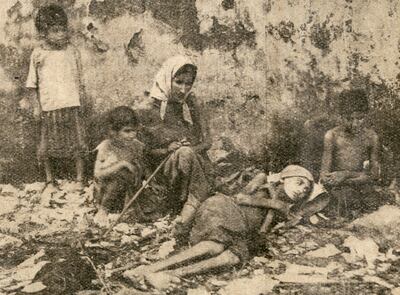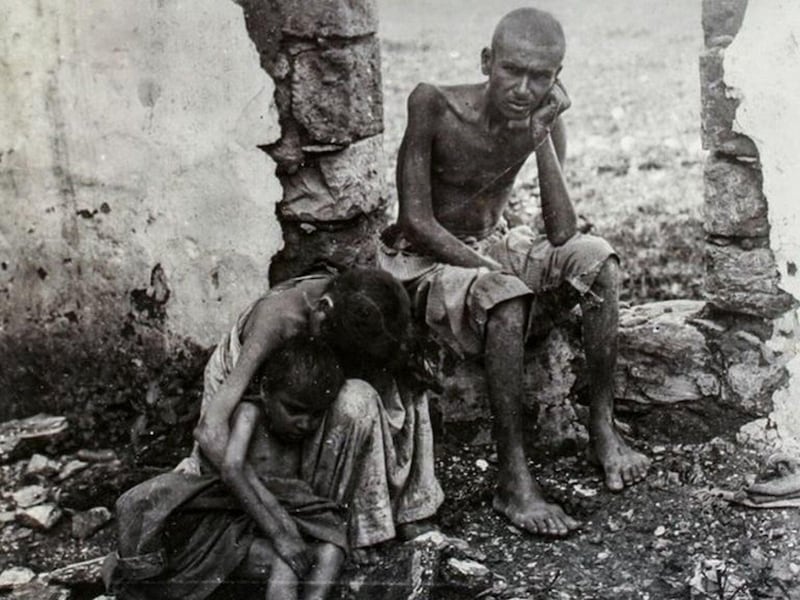In central Beirut stands an eight-metre tall painted steel sculpture of a tree, built by the artist Yazan Halwani in remembrance of the Great Famine of Mount Lebanon, which lasted from 1915 to 1918. Unveiled in 2018, the Memory Tree's branches are covered in Arabic calligraphy, quoting poets and writers who lived through the First World War calamity, including Kahlil Gibran and Tawfiq Yusuf Awwad.
Lebanon is today suffering multiple tragedies, from Beirut’s port explosion of August 2020 – one of the largest non-nuclear blasts in human history – to a crippling financial crisis that has depleted savings and significantly devalued the Lebanese pound.
As difficult as it is to imagine, the century-old famine was even more severe than these current troubles - having wiped out a sizeable portion of the population and forced countless to migrate. Since its centenary a few years ago, there has been a resurgence in interest relating to the famine, reinforced perhaps by the country’s continuing issues. The latest to examine the subject is Tylor Brand’s Famine Worlds: Life at the Edge of Suffering in Lebanon’s Great War.

The reasons behind the deadly famine were complex, having taken place under an unpopular Ottoman governor, Jamal Pasha, when the region faced a maritime blockade by Allied powers to prevent the supply of food. Furthermore, there was an invasion of locusts. Brand, an assistant professor of Middle Eastern Studies at Trinity College, Dublin, is less interested in the causes and politics behind the famine, and more in “how people experienced the crises”.
Brand previously resided in Beirut for six years, where he first began research into the famine at the American University of Beirut. While digging around historic accounts from that period, a more modern tragedy began to unfold as Syrian refugees poured in.
Navigating the streets of modern-day Beirut, Brand recognised his own “compassion fatigue” towards Syrian refugees in the writing of authors describing the famine a century ago: “I saw their avoidance strategies in my own rerouted journeys through the city, which over time began to favour streets where I would be less likely to encounter certain persistent child beggars and shoeshine boys.”
Later, while talking about the portrayal of death during the famine, he narrates the experience of American professor Edward Nickoley. While resting at home one day in 1917, Nickoley heard the “agonised moans” of a starving boy outside, which leaves him “emotionally conflicted” as he is held back from helping by an intangible fear.
He finally falls asleep without going out to help: “He woke the next morning to the sight of a cart loading a corpse where the boy had been. Nickoley did not act, and as a consequence, the collectors of the dead were forced to.”

The number who perished from the famine is not known for certain. According to one source, 200,000 died in Lebanon, though other estimates vary. Brand cautions against writers reducing suffering to a statistic, which he says inadvertently converts each individual life to a tiny fraction of a percentage: “While death understandably remains the morbid standard by which famines are measured, to overemphasise death skews our understanding of famine to the extreme, worst cases at their final, irreparable end.”
There is a chapter dedicated to survival tactics during the famine, such as adding wild herbs and roots to supplement normal diet, while those who were destitute “combed the trash heaps for potato and citrus peels, cactus pads, scraps of bone and gristle, melon rinds, rotten food and other nominally edible, if mostly indigestible, material.” Migration was another route towards survival, from rural to urban zones, swelling the populations of large towns and cities like Beirut, Tripoli and Zahle, “despite the obvious suffering in the streets”.
Famine Worlds is a meticulously researched account that will appeal to those with a scholarly interest in the historical Levant. However, its academic tone and forensic examination of the famine era is geared to a specific readership. Those looking for a populist reading on the topic will have to look elsewhere.






